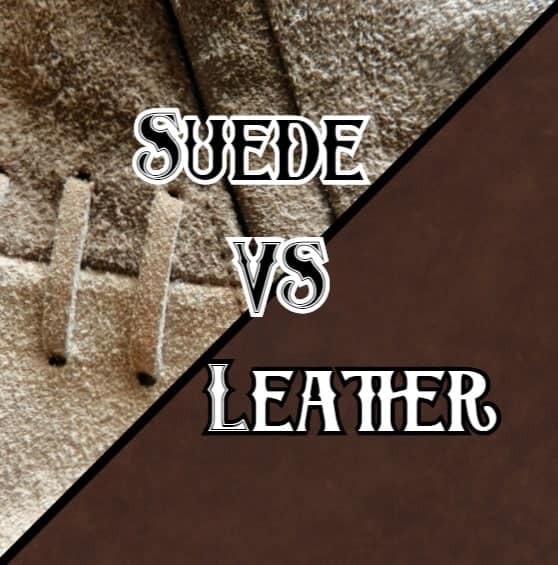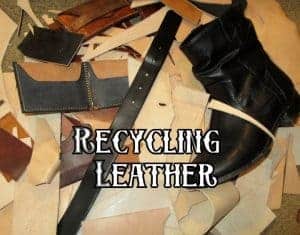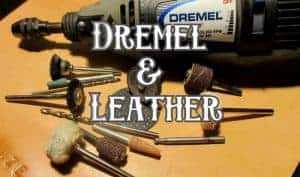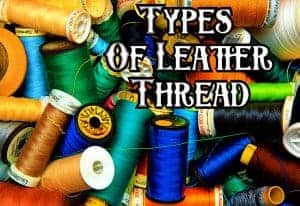
Difference Between Leather and Suede

When working with leather you will sometimes need to add filler or add a little extra flavor in your project. Suede works great with leather as they are both from the same hide.
Leather and suede have distinct differences between them, making them both great to use for specific applications. We will go over the differences between leather and suede, similarities and how to use them together.
Difference between leather and suede
Leather
Leather is a very classy yet hardcore type of material used in a wide range of items.
Leather comes from the top split of the cutting process from all different types of animal hides. If properly conditioned it will last much longer, but if not, it will easily start to dry out and crack.
Leather can come dyed in a wide range of colors and can even be embossed to create a unique texture. This can be very beneficial when crafting wallets, bags or purses as you will be able to choose from many different textures.

These textures can be natural skin colors due to the animal hide used to make the leather. Or textures can be imprinted into the leather to create a wide variety of textures. When dyeing leather you can also see that the leathers features will pop out a bit more. This can be very helpful when creating a very natural looking item.
The top layer of leather will be very shiny after the leather has been finished and will result in a very classy look.
Throughout the life of real leather you will start to notice that it will stretch out and become more comfortable. Shoes and jackets will take on the users size and start to mold and loosen to the shape of the person using it.
If veg-tanned you will notice a very nice patina starting to take place. This is when the leather has been aged and starts to look more worn and adds character to the item .
Veg-Tanned leather is also very unique compared to other leather and suede in that it can be tooled, stamped and molded.
This means images can be carved out to create unique pictures and textures in the leather. The leather can be stamped for logos and molded to shape around items. When a sheath is tightly wrapped around knife this makes a very unique sheath for that specific knife.

These types of crafting cannot be done with other leather or suede as they are more flimsy and do not hold shape.
Cleaning and Repairing leather
Cleaning leather is also much easier as most of the dirt or discolored spot will sit on the hard top layer. This will make it easy to rub some cleaner and conditioner on the leather to remove any grim that has built up on top of the leather. If the leather has been damaged or completely discolored there is a process to fix faded leather color.
You will have to sand down the worn out area and re color the are with some dye or restore ointment. Since leather has a tough surface it is much easier to clean and restore than suede.
Repairing leather is also quite a process but can be done unlike it’s suede counterpart. You can repair stitching, restore color, fix cracked leather and even recolor leather. This makes it very unique to other fabrics due to its durability .
Suede
Suede comes from the bottom layer of a split cut also known as “Split Leather”. This material, although from the same hide, has a more fuzzy and soft feel throughout the layer.

The split side will be sanded down bottom side to remove any flesh and this is what creates the fuzzy feel.
Suede has a loose grain unlike leather which makes it very flimsy and easy to dye. It can take on many different colors like leather but will usually show much better than leather will. Since the grain is looser it will absorb much more ink and spread throughout the whole fabric. This is why it very common to see very vibrant suede colors.
Suede has no top grain or hard surface making it much easier to get wet and stain from water damage. Since the fabric will absorb any liquid it will make it much harder to clean or recolor if even possible.
Suede is much more flexible than leather but does not stretch as easily since the grain is much more spread. This means that the grain is already as wide inside the fabric as it will get so stretching will be near impossible. This makes suede much more harder to break in overtime and will usually not break in as much as leather does.

You can see that the bottom area has a more loose grain which will result in the suede fabric.
Cleaning and Repairing suede
Cleaning suede has a different process when cleaning and usually will not clean as much as leather will. Using a toothbrush or a shoe brush can help remove any dirt on the surface and comb the suede into a uniform direction. Combing the fuzz into the same direction will make suede look much better.

Removing stains out of suede is almost impossible as the liquid will easily sit inside the suede fabric. You can re-dye the suede or even paint suede but you will only be able to go darker than the original color. Kiwi does have a suede stain eraser that may be worth checking out, but do not expect to remove the stain 100%.

Repairing will also be very hard as the suede cannot be stretched back to position to replace stitching. There are also no crack/hole fillers that can be used properly on suede unlike leather.
Similarities
We discussed the difference between leather and suede but what about the common traits between them. Since they are cut from the same cloth (literally) they are bound to have similar traits, and they may have more than you think.
Both should avoid being machine washed as the rough rotation and average soap can damage the hide. These materials can be cleaned using specific cleaners that are dedicated to the hide. If cleaning is a must, both of these materials can be brought to a professional cleaner.
Using these hides for making upholstery/crafts are very similar and can even make the same items as each other. There are leather and suede shoes, wallets, purses, pouches etc. if you can make it with leather you can probably make it with suede.
The difference is the structure, where leather will usually hold a stiffer form, suede will not. This can make it more difficult to build upright items with a more solid structure. But even leather, if not veg-tanned or very thin, can be very thin and flimsy.
To get around this you can use bag stiffeners as these are used to create more support for an item.

They both need to be tanned to avoid rotting from weather and age, but they both have different processes to them. You can check out our guide on how leather is tanned. Also dyes will be applied to both of these materials and can mostly take on any color from bright red to a dull brown.
Both of these materials are much thicker than your average cotton or linen cloth. Since they are thicker it is common to see these materials in shoes and winter clothes. Making them much more durable and warmer than most fabrics.
How to use suede in your next leather project
We talked about how and why to line leather and it is very common to use suede for this technique. This can help build structure to your leather item if you are using very thin leather. It is also good to aesthetics whether you place sued against the back of the leather inside an item to show some extra color. In shoes it is common to have leather hide the stitching on the inside sole. In this case you would be using a leather liner.
Due to its flimsy state, sued can be used for loose pockets inside bags or big wallets. If you only have one size of leather it will be much easier to add a pocket out of suede as it won’t be as stiff as the leather.
Although there are differences between leather and suede there are also close similarities between the hides. Try using suede in your next project and test out how it works with your leather projects.



